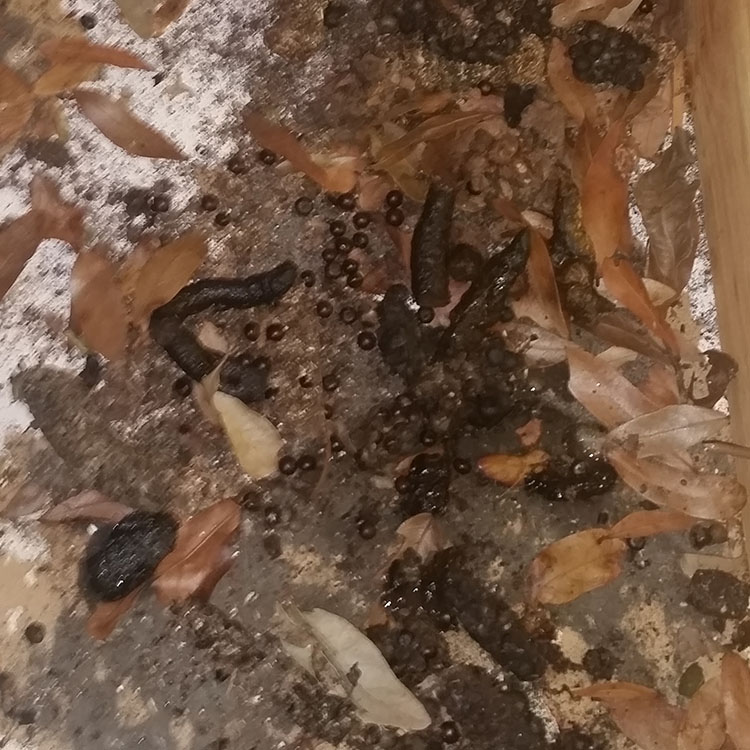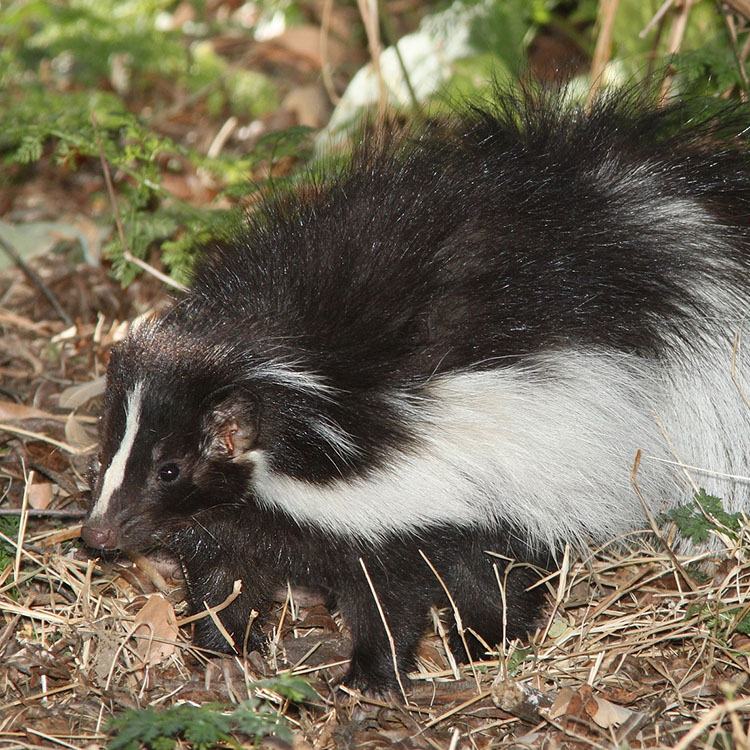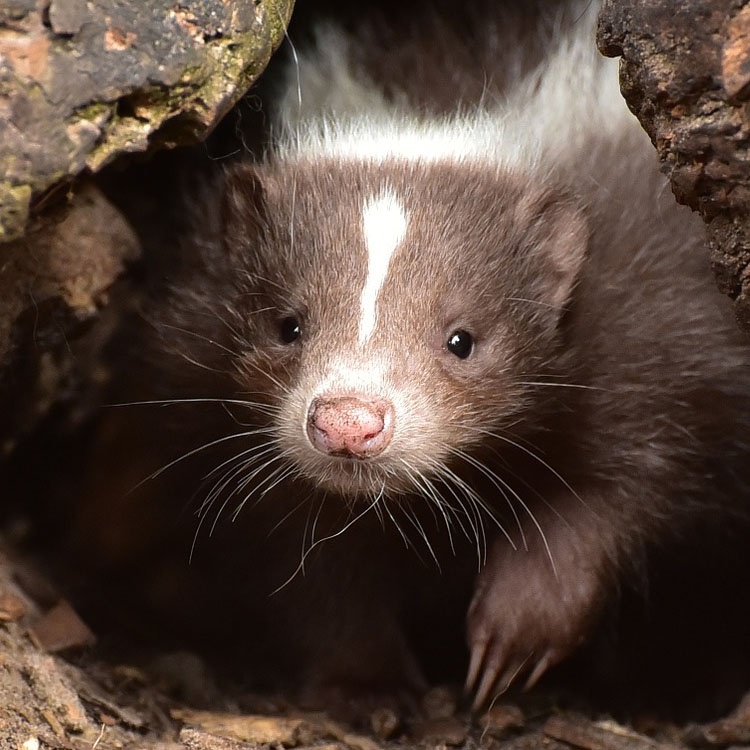Skunk Trapping & Removal
In this Article
Skunk Inspection
Skunks don't roam in packs, and won't set up colonies in the same manner as bats, rats, and other nuisance wildlife. You likely have one bothersome skunk who is stinking up your yard, attempting to or successfully spraying pest, digging holes, or has fallen into a window well or other place that you don't want it. This is our guid on how to get rid of skunks. If your skunk not obviously trapped in a window well, and you smell the presence of a skunk, you should inspect all areas of your outdoor property, including underneath raised decks, inside storage units, sheds, and garages, and any other outdoor areas like gazebos for these critters. Once you locate where they are making their home, you can start to put together a plan for trapping skunks.

Skunk Urine & Feces
Skunk feces is identifiable from other species of nuisance wildlife and will likely be found if the presence of skunks has been confirmed on your property. On occasion, customers contact our wildlife removal service for skunk removal, only to find out the skunk is living one house over, and has only roamed in their yard once. If you don't find feces in your yard or outdoor living space, advise your neighbords to check for skunks under sheds, porches, and decks on their property as well.
Skunk Dangers
These little animals usually spray to mark territory, or as a defense mechanism. The odor is pungent, and ultimately harmless as a smell. The spray, however, can be a real pain to remove. Common solutions involve a mixture of peroxide, baking soda, and dish detergent if you or your pets are sprayed by a skunk. You should be more concerned with any scratches or bites that you receive from a skunk. As skunks are wild animals, they are able to spread diseases to humans through this type of contact. Consult our guide to diseases spread by skunks if you want to learn more.
Take extra caution with pets outside until your skunk problem is resolved. In the least dangerous scenario, your pet can be sprayed by the skunk and need a bath with the chemicals I mentioned above. In the worst case scenario, your hosehold pet could become a host for one of the diseases that a skunk can carry. Yes, skunks are dangerous to pets, and you should seek immediate consultation with a veterinarian if you think that your cat or dog may be carrying a disease from a skunk.

Trapping skunks
DIY Skunk Removal
If you are going to attempt to remove or exterminate skunks on your own, make sure that you are using the proper safety gear and following all regulations that apply to skunk trapping, removal, and extermination in your area. In our experience, trapping or excluding skunks is more effective than killing skunks. With years of experience, this method should be a last resort for almost any nuisance wildlife removal. However, in the case of the skunk, it is more for self-preservation. To be close enough to guarantee a humane killing by law of a skunk, you run the risk of experience an immediate post-mortem spray landing on you. Skunk extermination can quickly backfire on you if you do not know what you are doing.

Excluding Skunks
Live exclusion remains the most effect method for wildlife removal and guarantees the highest amount of animal lives saved. Clear plastic polycarbonate spikes can be used near gardens to keep these little travelers out of your crops, and metal screening can be installed over gaps between raised decks and the ground to humanely remove skunks from your property. If you have a skunk stuck down the window well, something you can find in almost any suburban garage can almost always solve your problem within a few hours.
It's important that you understand that an exclusion is meant to not only encourage skunks to leave, but to keep skunks away for the forseeable future. Plastic spikes mentioned above are good at keeping skunks out of your garden, but a true exclusion will eliminate all possibilities of skunks entering your yard. During your inspection, if you noticed holes along the fenceline or damage to your fence panels, repair the damage and fill in the holes with tightly packed dirt. Place plastic spikes in this dirt to allow it time to settle in with the dirt around it without being dug up again by other animals or skunks.
